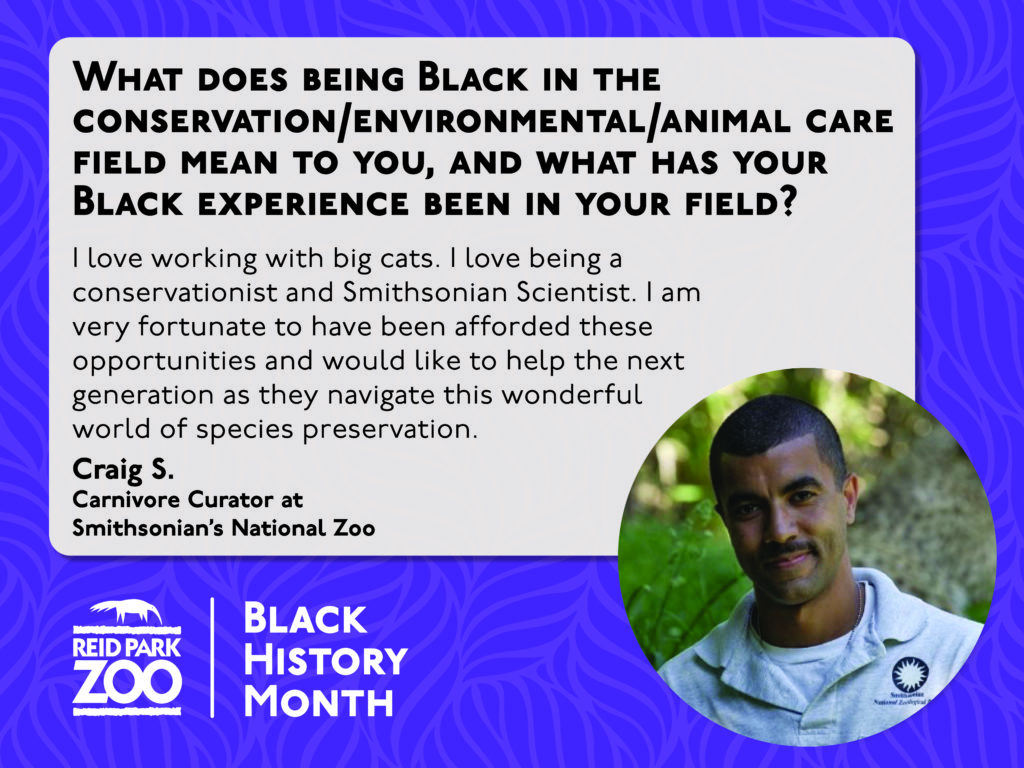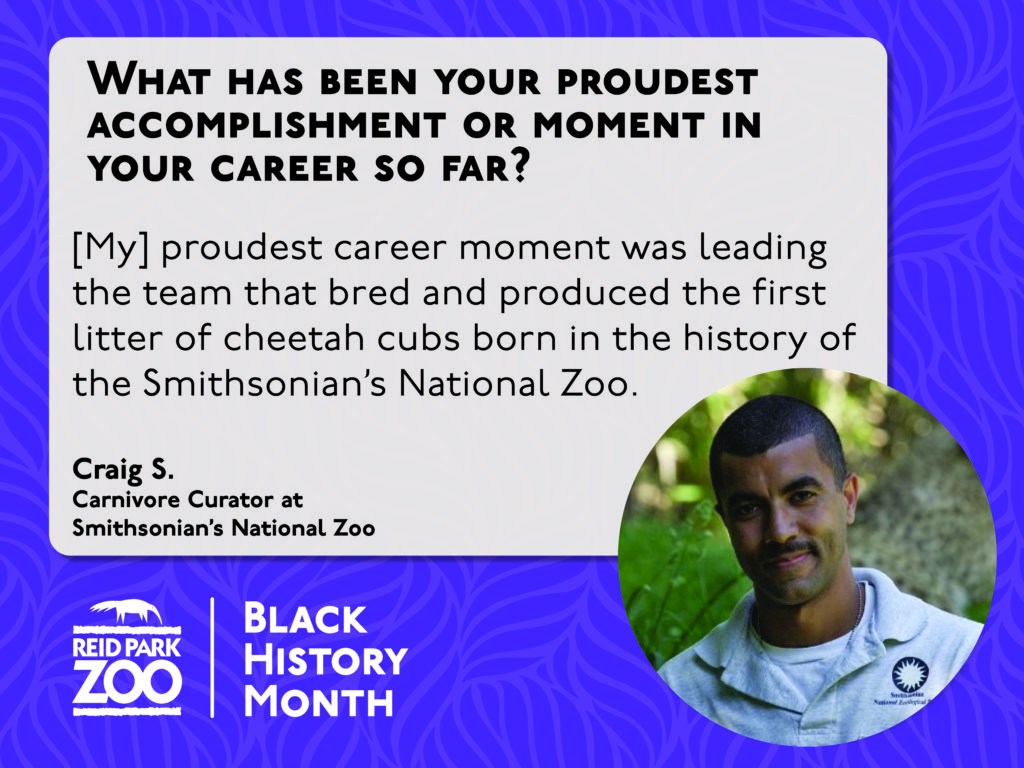Black In Nature: Featuring Craig Saffoe

This post is part of “Black in Nature: Tackling Diversity in Conservation,” a Black History Month series giving Black people who work in animal care and conservation a platform to share their experiences and spark the conversation necessary for change. Learn more here.
Craig Saffoe is a Curator of large carnivores at Smithsonian’s National Zoological Park. He has worked in the conservation field for around 27 years and is proud to be an example for people interested in zoo careers.
“I have met and been mentored by so many great people,” shares Craig. “Unfortunately only a small handful of them have been black. For me, being a black man in this field means that I have a rare opportunity to be an example to others in my community who may be interested in animals or this field, but don’t think it is a place for ‘us.’”
Craig believes that zoos around the country struggle with diversity. He would love to see increased diversity and that his white colleagues feel the same way.
“The problem is not that there is a lack of desire to increase diversity — there is a lack of action. Writing diversity statements and expressing support for diversity is wonderful, but now it is time to put some action behind those words.”
One action that Craig recommends is talking openly and honestly with current minorities employed at zoos. “Don’t be afraid of our heritage. Ask those staff members for ideas. Listen to them and give serious consideration to their thoughts — especially those that can become action items.”
Craig has found that most minorities are proud of their heritage and would be happy to be held up as examples for their communities, “not just because we are black. But because we are black and good at our jobs!”
One of Craig’s proudest moments was being a part of the team that successfully bred the first litter of cheetahs in his zoo’s history in 2004. Craig led the team that spent years learning about cheetahs and repeatedly working to encourage breeding. This historic birth was the culmination of 10 years of work from Craig and his team.
These years of experience have given Craig valuable knowledge about wildlife conservation. He feels that human/animal conflicts are currently the largest challenge faced by wildlife. He says “people [and wildlife] can cohabitate, but it is not easy and can often end with large scale killing of the non-human animal population.”
An increase in the diversity of conservationists could be part of the solution to issues like this. Craig believes that we can start by inspiring future generations to get involved in wildlife work.
“When people see folks who look and sound like them working in careers that they would love to be a part — they tend to feel that they too can do it! From there, give the next generation of young black conservationists the same opportunities that are given to others.”

